AUTOMATE CONFERENCE AGENDA
May 6–9, 2024 · Chicago, Illinois, USA
A paid conference pass is required to attend these sessions. It can be purchased when you register for the show, or added on to your current registration. Please note that the agenda is subject to change, and additional sessions will be added in the future.
VIEW BY TOPIC:
CERTIFICATIONS: Classes included with purchase of conference pass. Exams require additional fee.
VIEW BY DAY:
Advanced Optics for Vision
Stuart Singer, CEO, Schneider Optics, Inc.
Topic(s): Machine Vision, Imaging & Inspection
Designed for the engineering professional, this course concentrates on real-world techniques for putting together optic systems that work. You’ll learn how to select proper lens components, optomechanical layout, including system bends, and mounting techniques. Prior attendance at a Basic Optics course is encouraged, but not required. |
|
 |
CEO Schneider Optics, Inc. |
Deploying AI to Retrofit Manual and Vision-Guided Robotic Processes in the Automotive Industry
Sina Afrooze, CEO & Co-Founder, Apera AI
Topic(s): AI & Smart Automation Machine Vision, Imaging & Inspection Robotics: Applications, Systems & Innovations
This talk will examine case studies from the automotive industry involving the deployment of artificial intelligence (AI) for vision-guided robotic applications.
|
|
 |
CEO & Co-Founder Apera AI |
Designing for Tomorrow’s Cybersecurity Challenges
David Bader, VP of Business Development, Eurotech
Topic(s): AI & Smart Automation Automation Systems, Design & Integration Cybersecurity
In the age of Industrial Internet of Things (IIoT) and EdgeAI computing, the landscape of cybersecurity faces unprecedented challenges. Unlike traditional systems, IIoT and EdgeAI compute extend connectivity to a vast array of equipment, field devices, and employee gadgets. This connectivity revolutionizes automation and remote asset management but introduces a labyrinth of security concerns. In this complex realm, our talk delves into three crucial aspects: |
|
 |
VP of Business Development Eurotech |
Developing High Mix Capability Through Open-Source Collaborative Initiatives
Matthew Robinson, ROS-Industrial Consortium Americas Program Manager, Southwest Research Institute
Topic(s): AI & Smart Automation Robotics: Applications, Systems & Innovations
Within the ROS-Industrial Consortium, there has been a development vehicle called Focused Technical Projects (FTPs) which have sought to build out foundational capability at a more application level and demonstrate it through example applications. One of those initiatives has been Robotic Blending, which takes the Scan-N-Plan framework and applies it to surface processing applications. Most recently via a collaboration with the Steel Founders' Society of America, the Robotic Blending Milestone 5 FPT was launched and completed resulting in improvements to open-source tools and a foundational application that may be replicated for additional foundry end-users within their shop environments. |
|
 |
ROS-Industrial Consortium Americas Program Manager Southwest Research Institute |
Emerging Trends in Collaborative Automation
Michael DeGrace, UR+ Ecosystem Manager, Universal Robots
Topic(s): Collaborative Robotics Getting Started with Automation
Collaborative robots were pioneered for businesses that had been left behind by traditional robotics. Almost 20 years later, cobots have become the fastest-growing segment of the robotics industry, driven by users who keep finding more areas of production for cobots to add value. Universal Robots even manages an ecosystem of over 400 pre-integrated products designed to put cobots to work across this ever-growing range of tasks and processes. The team overseeing this UR+ ecosystem is obsessed with finding the future of cobots: so what do they see cobots doing in the next 24 to 36 months? |
|
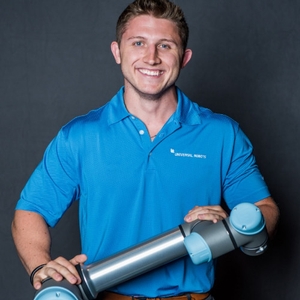 |
UR+ Ecosystem Manager Universal Robots |
Robots Unleashed: Why AMRs Are on the Rise and How AI Will Further Disrupt Production Logistics
Daniel Zindl, Chief Product Officer, Agilox North America
Topic(s): Autonomous Mobile Robotics Logistics & Supply Chain Automation
Daniel Zindl, Chief Product Officer at AGILOX, a leading technology company for AMR solutions, will discuss current market trends and developments in the autonomous mobile robot industry. He will provide insights into how AMRs can enhance manufacturing and warehousing processes for increased efficiency and offer valuable perspectives on successful applications. Furthermore, he will share his outlook on AMR innovations and how simulation-based robot prototyping can accelerate the realization of dark warehouses, potentially faster than initially anticipated. Join Daniel in an engaging speaker session on AMR innovations and discover how smart robot solutions can automate up to 80% of all transportation processes within a facility. |
|
 |
Chief Product Officer Agilox North America |
The Fundamentals of Machine Vision
David Dechow, Industrial Factory Solutions Architect, Motion AI
Topic(s): Machine Vision, Imaging & Inspection
You’ll learn all the basics, including how images are captured and transferred to the computer, the principles of lighting, and the common processing algorithms used by machine vision systems. Discover how to successfully implement machine vision and how to avoid common pitfalls during the implementation, launch and production phases. This is an ideal training course for people new to machine vision as well as a great refresher course for anyone with machine vision responsibilities. |
|
 |
Industrial Factory Solutions Architect Motion AI |
Moneyball: Lessons for Life and Business from Baseball’s Best General Manager
Billy Beane, Former Executive Vice President of the Oakland Athletics
With great insight and signature wit, Beane conveys his innovative, winning style of management and leadership, which involves identifying undervalued assets to create and sustain a competitive advantage. By striking parallels between baseball and business, Beane inspires audiences across industries (including health care, insurance, finance, etc.) with his unforgettable winning underdog story. |
|
 |
Former Executive Vice President of the Oakland Athletics |
Design For Additive Manufacturing: By A Machine Designer For Machine Builders
Paul DeWys, Sales Engineer, Forerunner 3D Printing
Topic(s): Automation Systems, Design & Integration Emerging Applications in Automation
When I originally started my first company in 2010 it was not in additive, it was a mechanical engineering firm and to this day I still operate that business and we specialize in designing factory automation equipment. For the first 5 years when we were just an engineering firm, I was always keeping an eye on 3D Printing and its capabilities while thinking “Why are we not using this technology to make parts for all the machines we are designing”? The gap I kept finding that separated these two markets was that machine designers/builders did not know what additive technologies were capable of and additive manufacturers did not understand what these machine builders' true needs were (or what they were even trying to do). In 2016 I set out to bridge that gap with the acquisition of our local additive part supplier and the formation of our 3DP business unit. Since that point, my team and I have made it our mission to help educate machine build and automation companies about the potential for additive manufacturing beyond the simple jigs and fixtures. |
|
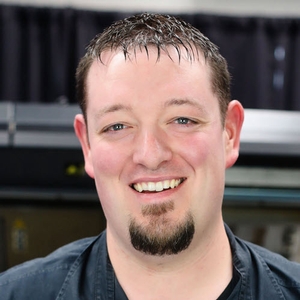 |
Sales Engineer Forerunner 3D Printing |
Discovering the Key Factors in Microscope Objective Performance
Rebecca Charboneau, Optical Engineer, Edmund Optics
Topic(s): Machine Vision, Imaging & Inspection
When designing a machine vision system for high-magnification applications, selecting the correct microscope objective is critical. Often, microscope objectives are selected based on their numerical aperture (NA) as this specification is thought to describe the objective’s resolving power; however, this does not tell the whole story. This presentation will go over what defines a microscope objective’s performance and how this can be applied when developing high-magnification machine vision systems. |
|
 |
Optical Engineer Edmund Optics |
Getting Started with Industrial Robotics
Bob Rochelle, Account Manager, Güdel Inc.
Topic(s): Getting Started with Automation Robotics: Applications, Systems & Innovations
Industrial Robots are the heart of Lean Manufacturing and are vital to the current vibrant manufacturing economy in North America. The “Getting Started with Robotics” presentation is an introduction to the Industrial Robotics or Flexible Automation Industry. We will explore Robot-Based Automation Systems to include how the industry functions, why to choose robot-based automation, principles of system integration, general principles of robot technology, the business case for automating and calculating ROI plus the common mistakes made in Robot Integration. The attendees will learn through discussion and evaluating system photos and videos illustrating various robotic-based flexible automation systems. |
|
 |
Account Manager Güdel Inc. |
Leveraging UL Robotics Standards Testing to Meet Your Verification & Validation
Jason Smith, Principal Engineer - Commercial Robotics, UL Solutions
Michael Jensen, Product Manager - Industrial Machinery & Automation, UL Solutions
Topic(s): AI & Smart Automation Robotics: Applications, Systems & Innovations
Demonstrating safety to customers and code authorities is key to expanding your business opportunities for robot systems, industrial mobile robots, and commercial robots. Verification and validation are an important foundation for conveying safety to customers and demonstrating enhanced safety testing can be crucial in opening up expanded sales markets in a range of industries, including manufacturing, logistics, and commercial service markets with potential public interaction, such as hospitals, restaurants, delivery and more. |
|
 |
Principal Engineer - Commercial Robotics UL Solutions |
 |
Product Manager - Industrial Machinery & Automation UL Solutions |
Robotic Bin Picking Solutions in Automotive
Sreten Zakula, Staff Engineer - Robotics/Automation Applications and Execution, General Motors
Will Keller, Senior Manufacturing Engineer, General Motors
Topic(s): Advances in Material Handling Robotics: Applications, Systems & Innovations
We will discuss different types of bin picking, review how we define “does it work”, review examples that we think to work, and highlight what we believe are critical variables and strategies for automated bin picking systems. Examples will focus on sheet metal parts and assemblies that are common in the automotive industry. |
|
-2-(1)-1.jpg) |
Staff Engineer - Robotics/Automation Applications and Execution General Motors |
 |
Senior Manufacturing Engineer General Motors |
Robotic Force Control: Applications from Medicine to Manufacturing
Robb Colbrunn, Director, BioRobotics Lab, Cleveland Clinic, Cleveland Clinic
Topic(s): Emerging Applications in Automation Robotics: Applications, Systems & Innovations
My area of research interest lies where medicine and robotics intersect. This includes where they currently intersect as well as where they can intersect in the future. More specifically, as Director of the BioRobotics Lab at the Cleveland Clinic we have created a center of excellence for biomechanical testing of biological structures and biomaterials. Our mission is to employ world-class facilities to allow investigators to conduct high-quality research on the mechanical properties of existing biological structures and constructs, as well as to quantify the potential for new technologies and clinical advancements. The robotic systems we developed allow researchers to simulate loading conditions on a cadaveric joint by using actuators to simulate muscle forces while simultaneously applying external loads to the joint. Applications of this type of testing are numerous and can be used to provide insights into orthopedics, joint kinematics, surgical techniques, and disease pathologies. Applications of the enabling technology have benefits in manufacturing.
|
|
 |
Director, BioRobotics Lab, Cleveland Clinic Cleveland Clinic |
Event Driven IT/OT Convergence for Smart Manufacturing
Farukh Naqvi, Manufacturing Business Partner, Boston Beer Company
Topic(s): AI & Smart Automation Automation Systems, Design & Integration
The landscape of manufacturing processes is evolving as established standards such as ISA 95 (Process Event Model), ISA 106 (Procedure Model), and ISA 112 (SCADA Standard) transition towards an event-driven paradigm. This shift aims to provide a unified operator experience and augmented capabilities. Advancements in technology platforms for Event Generation, Event Processing, and Event Correlation, bolstered by AI/ML models, are opening up extensive possibilities for IT/OT convergence. This convergence aims to harmonize data, offering a comprehensive operator view of equipment and process performance. |
|
 |
Manufacturing Business Partner Boston Beer Company |
Industrial Robot and Robot Application Safety: A Look At the New ISO 10218-1 and -2
Roberta Nelson Shea, Global Technical Compliance Officer, Universal Robots
Topic(s): Automation Safety Robotics: Applications, Systems & Innovations
Learn about the recent revisions to ISO 10218-1 and ISO 10218-2 and how they affect your operations. |
|
 |
Global Technical Compliance Officer Universal Robots |
Optimizing Automated Material Removal: Safe, Effective, Repeatable
Tucker Sweet, Automation Application Engineer, SCHUNK
Topic(s): Automation Systems, Design & Integration Material Removal, Grinding & Abrasives Robotics: Applications, Systems & Innovations
Material removal is the removal of unwanted material from a workpiece. This is usually done through processes described as deburring, grinding, or polishing. Typically, the material to be removed remains from a previous manufacturing process like turning, milling, welding, etc. This unwanted material can cause interference during assembly operations, increased wear or premature failure on mating parts, safety concerns due to sharp edges and hazardous tasks, poor aesthetics from manufacturing defects, or an increase in corrosion rate. Oftentimes material removal is a step in the manufacturing process that isn’t considered until late in the process. Machine tools are typically large capital investments, but often they are used to do basic material removal functions that can be done outside of the machine improving throughput and reducing cycle time. Automated material removal outside of a machine tool with a robot and some specialty tools can help solve these issues and concerns. |
|
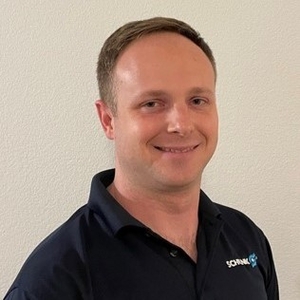 |
Automation Application Engineer SCHUNK |
The Rise of the Advanced Manufacturing Team and DIY Industrial Automation
Etienne Lacroix, CEO, Vention
Topic(s): Automation Systems, Design & Integration The Business Of Automation
For the past 30 years, industrial automation has undergone relatively few changes to the way automation is designed and deployed. Traditional automation technology was developed (and priced) for high-throughput manufacturing, making it most accessible to those who could afford complex, custom integration services. This left small and medium-sized businesses, the ones who would benefit from the democratization of automation, behind. |
|
 |
CEO Vention |
Transforming Manufacturing with AI: From Development and Deployment to Optimization
German Suvorov, AI Solutions Architect - Business Development, AI Ecosystem, Siemens
Steffen Klawitter, Digital Enterprise Lead Architect, Siemens
Topic(s): AI & Smart Automation Automation Systems, Design & Integration
In this session, we will dive into the transformative world of Artificial Intelligence (AI) in manufacturing. As the manufacturing landscape rapidly evolves, embracing AI-driven solutions is no longer a choice but a necessity for staying competitive. |
|
 |
AI Solutions Architect - Business Development, AI Ecosystem Siemens |
 |
Digital Enterprise Lead Architect Siemens |
Advanced Vision Lighting
Steven King, Product Manager, Omron
Topic(s): Machine Vision, Imaging & Inspection
The advanced lighting session will dive deeper into the main machine vision lighting principles of illumination, reflection, emission, absorption and transmission and how these can be exploited to create high contrast images for inspection and code reading. The course will go through the fundamental concepts in greater detail, and then through the more advanced concepts of color, multi-light, photometric stereo and multispectral imaging, detailing all from both the theoretical and practical viewpoints. |
|
 |
Product Manager Omron |
Beginning Optics for Machine Vision
Nicholas Sischka, Director, Imaging, Edmund Optics
Topic(s): Machine Vision, Imaging & Inspection
This course teaches the fundamentals for optics for machine vision and robotics. Students will learn the fundamental parameters of an imaging system and why they are important, as well as how to choose a lens using first order parameters. The course then teaches the concept and real-world applicability of the modulation transfer function (MTF) and how to manipulate an MTF with different variables to change things such as the depth of field. Lastly, the course will introduce telecentric lenses and how they are different from more traditional imaging optics. |
|
 |
Director, Imaging Edmund Optics |
Cutting Through the Hype: An Overview on How to Evaluate AI Solutions for Industrial Applications
James Davidson, Chief Architect, MiR
Jeremy Rockman, Product Marketing Manager, Mobile Industrial Robots
Seemingly daily advancements in Artificial Intelligence (AI) are driving intense interest in harnessing AI in just about everything—and many people are already using AI-enhanced applications as part of their daily lives. While we have seen a remarkable spread of AI into business and software applications, the Industrial Automation sector has hesitated to leverage AI due to the real complexities of their applications. However, these advancements are steadily bridging the gap and AI’s increasing capabilities are unlocking the potential in applications that have historically been beyond its limits. This talk aims to provide attendees with a comprehensive overview of the key considerations and best practices for assessing and evaluating AI systems in mission-critical industrial applications to ensure they not only meet the application's needs but also the risks and corresponding mitigations have been carefully considered and accounted for. In industrial applications, the "cost of a mistake” can be severe. When chatbots make a mistake, it can be funny. When self-driving cars make a mistake, it can be tragic. This talk will explore state-of-the-art techniques and tools for validating AI models and performance metrics tailored to specific industrial use cases and highlight the need for rigorous error analysis and the development of fail-safe mechanisms to mitigate risks. We will discuss real-world case studies demonstrating the impact of AI failures and the strategies employed to prevent and manage such incidents. We will delve into the significance of robust testing frameworks to ensure the reliability and performance of AI models. We will emphasize the importance of repeatability and stability, particularly in the face of new training data, which is essential for maintaining the integrity of AI systems over time. By the end of this talk, attendees will have a solid understanding of the critical aspects of evaluating AI solutions in industrial applications and be equipped with the knowledge and tools necessary to make informed decisions when implementing AI systems. |
|
 |
Chief Architect MiR |
 |
Product Marketing Manager Mobile Industrial Robots |
Demystifying AI: Tangible Solutions for Today's Manufacturing Challenges
Eric Danziger, CEO & Co-Founder, Invisible AI
Topic(s): AI & Smart Automation Machine Vision, Imaging & Inspection
"Demystifying AI: Tangible Solutions for Today's Manufacturing Challenges" is a session tailored for industry leaders seeking immediate, practical applications of AI and Computer Vision technology on the factory floor. In today's manufacturing landscape, faced with extreme labor shortages, getting more done with less is paramount. This session highlights how AI and Computer Vision can play a pivotal role in enhancing production and throughput despite challenges with understaffing and high turnover rates. |
|
 |
CEO & Co-Founder Invisible AI |
From Funding to Impact: How ARM Institute Projects Strengthen U.S. Manufacturing
David Galati, Chief Scientist, TITAN Robotics Inc
Eric Kumar, Head of Customer Success, Corsha, Inc.
Michael Skocik, Senior Programs Manager, ARM Institute
Rishi Ranjan, CEO, GridRaster
Topic(s): ARM Institute Updates Robotics: Applications, Systems & Innovations
In this session, you’ll hear from subject matter experts who have taken their ARM Institute projects from funding to real-impact on U.S. manufacturing. You’ll walk away from this session with an understanding of advancements catalyzed by the ARM Institute, how you can become involved, best practices for projects that bridge the gaps between industry, government, and academia, and more. |
|
 |
Chief Scientist TITAN Robotics Inc |
 |
Head of Customer Success Corsha, Inc. |
 |
Senior Programs Manager ARM Institute |
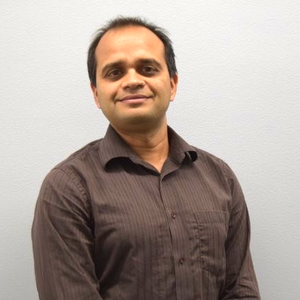 |
CEO GridRaster |
Simplicity and Innovation: Designing Small Automated Systems
Drew Cunningham, Business Development Manager, AutoStore
Topic(s): Automation Systems, Design & Integration Getting Started with Automation
While every building and process is different, many can benefit from the intelligent application of technology. Discover how you can optimize your existing footprint: increase storage, decrease labor, multiply production, safeguard assets, and enhance timeliness. Attendees will learn how to design a scalable solution that matches the needs of their business today and into the future, without investing significant capital. Onshoring and nearshoring will drive changes in how facilities operate for years to come. Learn how to adapt and provide your customers secure and timely access to their components. Critically, attendees will be able to determine how to benchmark their process to find where the greatest value can be driven through intelligent automation. |
|
 |
Business Development Manager AutoStore |
Successful Automation Strategies: Fast, Wide Scale Implementation for Small or Global Organizations
Jerry Perez, Executive Director - Global Accounts, FANUC America Corporation
Topic(s): Getting Started with Automation Robotics: Applications, Systems & Innovations The Business Of Automation
Many automation plans and roadmaps either lose steam, focus, fail to return on investments, or all of the above.
Do you have a roadmap? Are you as far along on your automation plan as planned? Are you getting the return that you promised? How to select your integrator? Where do you start? |
|
 |
Executive Director - Global Accounts FANUC America Corporation |
Which 3D Imaging Technique Is Right for You?
Boris Duché, Product Manager, IDS Imaging Development Systems GmbH
Topic(s): Automation Systems, Design & Integration Machine Vision, Imaging & Inspection
Prepare to delve deep into the world of 3D technology through this comprehensive seminar dedicated to the science of depth sensing. We will focus on two distinct techniques — active-stereo vision and time-of-flight (TOF) — that form the backbone of modern 3D imaging. This seminar aims to equip you with a foundation of knowledge that can be integrated into your automation applications. |
|
 |
Product Manager IDS Imaging Development Systems GmbH |
Applied Vibration Theory: A Guide to Vibration Troubleshooting and Measurement Techniques
Mark Holcomb, Owner, Dynamic Systems Engineering
Topic(s): Motion Control & Conveyance Motors & Drives
Finding the root cause of unwanted vibration can be fraught with endless testing, dead ends, and wasted time. To be successful, a basic understanding of vibration theory is required. This course presents a methodology, as well as basic vibration measurement theory, that can be applied to solve the toughest vibration problems. Beyond the methodology, topics like the FFT, Modal Analysis, and transient versus steady-state vibration are discussed, as these are key elements needed to find the root cause. Finally, an example that follows the methodology, and uses the key elements discussed, is presented. |
|
 |
Owner Dynamic Systems Engineering |
How Their First Robot Purchase Enabled A 70-Year-Old Company with 11 Facilities on 3 Continents to Profitably Expand Their Domestic Manufacturing
Patrick Varley, Product Marketing Manager (Robot), Mitsubishi Electric Automation Inc
Topic(s): Automation Systems, Design & Integration Getting Started with Automation Robotics: Applications, Systems & Innovations
World Wide Fittings, Inc. is a 70-year-old company that manufactures steel and stainless steel hydraulics fittings in 11 facilities spanning 3 continents. When supply chain issues made getting parts from their Asian facilities impractical, Illinois-based manufacturer World Wide Fittings, Inc (WWF) needed to increase their domestic manufacturing capability while maintaining a high level of productivity and quality. Increasing domestic output would lessen the impact of the supply chain issues, but domestic production had to do more than just shorten delivery times: The facilities had to achieve a high level of productivity and efficiency to stay competitive. Fortunately for them, the answer was just across from their parking lot. |
|
 |
Product Marketing Manager (Robot) Mitsubishi Electric Automation Inc |
It Takes A Village: Fostering an Ecosystem to Solve the Biggest Challenges
Florian Pestoni, CEO & Co-founder, InOrbit
Topic(s): Autonomous Mobile Robotics Logistics & Supply Chain Automation
Over the last few years, the robotics landscape has witnessed a remarkable surge in the number of companies entering the field. As a result, end users looking to augment their operations with automation must navigate a complex maze of technologies and work with multiple vendors. Fragmentation within the industry is a problem that hinders the rapid adoption of robotics solutions. |
|
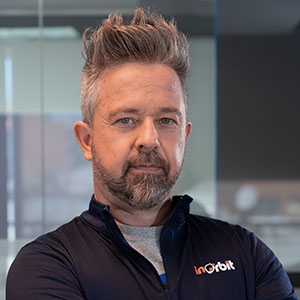 |
CEO & Co-founder InOrbit |
Learn How the Latest Cobot Technologies can Optimize Any Production Process
Hope Dollarhide, Project Engineer, FANUC America
Topic(s): Collaborative Robotics
Collaborative robots (cobots) have transformed automation across diverse industries. Over the past decade, cobot applications have evolved from simple pick-and-place tasks to more complex functions such as inspection, welding, material handling, machine loading, and palletizing. Today, the potential impact of cobots even extends to the finishing and coating industry. In this session, we'll explore the numerous advantages of integrating cobots into your production process, including:
|
|
 |
Project Engineer FANUC America |
Leveraging AI in Manufacturing and Logistics
Kevin Jones, VP of Sales, OnLogic
Michael Kleiner, VP Edge AI Solutions, OnLogic
Topic(s): AI & Smart Automation Automation Systems, Design & Integration Logistics & Supply Chain Automation
AI has been top of mind for every business for over a year now, but how do we bring the rapid advancement of technology to practical applications on the manufacturing floor and fulfillment center? |
|
~2.jpg) |
VP of Sales OnLogic |
 |
VP Edge AI Solutions OnLogic |
Strategies for Making Advanced Robotic Manufacturing Technology Accessible to System Integrators and End Users
Jacob Cipriano, Business Development, Manufacturing Automation Systems LLC
Jerry Perez, Executive Director - Global Accounts, FANUC America Corporation
Larry Sweet, Director, Engineering, ARM Institute
Paul Evans, Executive Director R&D, Southwest Research Institute
Roger Christian, Divisional Leader, New Business Development, Yaskawa America Inc., Motoman Robotics Div.
Topic(s): ARM Institute Updates Automation Systems, Design & Integration Robotics: Applications, Systems & Innovations
Robotics technology providers can’t operate in a bubble. Ensuring that robotics innovations can be easily adopted and integrated by manufacturers of all sizes is critical. Join this session to better understand the opportunities and challenges (both business and technical) that come with making robotics technology more accessible, learn about best practices, hear from subject matter experts who are working on this issue, and join an interactive discussion on possible solutions. |
|
 |
Business Development Manufacturing Automation Systems LLC |
 |
Executive Director - Global Accounts FANUC America Corporation |
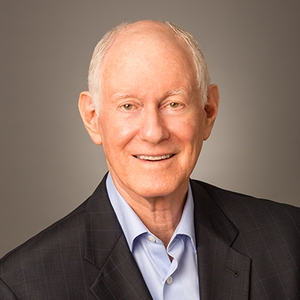 |
Director, Engineering ARM Institute |
 |
Executive Director R&D Southwest Research Institute |
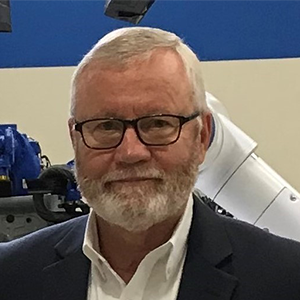 |
Divisional Leader, New Business Development Yaskawa America Inc., Motoman Robotics Div. |
Advanced Camera & Image Sensor Technology
Steve Kinney, Director of Training, Smart Vision Lights
Topic(s): Machine Vision, Imaging & Inspection
Explore the different levels of image quality at the sensor level. Details relating to quantum efficiency, dark noise, signal to noise ratio will be discussed in detail. In addition to topics related to area scan cameras, the proper usage of line scan and TDI cameras will be reviewed. Sensor size classification and relationship to the camera’s lens mount will be covered. |
|
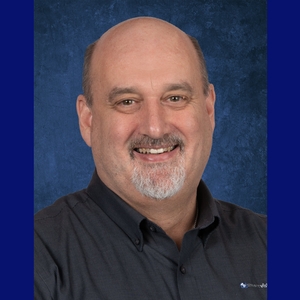 |
Director of Training Smart Vision Lights |
An Introduction to Automation: Working with Systems Integrators
Adam Crandall, Chief Revenue Officer, Addtronics
Topic(s): Automation Systems, Design & Integration Getting Started with Automation
In today's rapidly evolving industrial landscape, automation has transcended from a mere technological advancement to a strategic imperative. The transformative potential of automation is undeniable, promising increased operational efficiency, reduced costs, enhanced product quality, and heightened competitiveness. Yet, for many organizations, the path to automation remains unclear. |
|
 |
Chief Revenue Officer Addtronics |
Modern Backup Strategies to Minimize Risk and Maximize Efficiency
Adam Gluck, Founder & CEO, Copia Automation
Topic(s): AI & Smart Automation Automation Systems, Design & Integration
In the contemporary industrial landscape, safeguarding control data through robust backup strategies is of paramount importance. While IT departments have long prioritized business data backups, the intricate manufacturing environment is often heavily reliant on workers physically connecting PCs to PLCs with backups not happening on a regular and consistent basis. Even with these manual processes to backup machines and devices, in addition to diverse automation programs, there is no way to know if code was changed, when, why, or by whom, leading to vulnerabilities in the system. |
|
 |
Founder & CEO Copia Automation |
No One Does It Alone: What It Takes to Make a Partnership Work in Robotic Abrasive Processing
Michelle Frumkin, Senior Global Robotics Portfolio Manager, 3M Company
Tyler Naatz, Senior Application Engineer, 3M
Topic(s): Material Removal, Grinding & Abrasives Robotics: Applications, Systems & Innovations
To do Robotic Abrasive Processing correctly and gain the full ROI an End Customer & SI are looking for, it takes an ecosystem of partnerships. Featuring real-world examples from both the technical and business side, this presentation will apply beyond Robotic Abrasive Processing to give insights and learnings that can be applied to your area of automation expertise. |
|
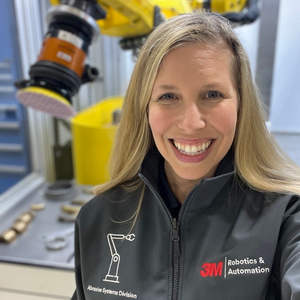 |
Senior Global Robotics Portfolio Manager 3M Company |
 |
Senior Application Engineer 3M |
Stereo Imaging Use Cases and Challenges for Warehouse Robotic Applications
Stephen Se, Senior Engineering Manager, Depth Sensing, Teledyne FLIR - Machine Vision
Topic(s): Logistics & Supply Chain Automation Machine Vision, Imaging & Inspection Robotics: Applications, Systems & Innovations
Depth perception is a requirement for various warehouse robotic applications such as autonomous navigation, pick & place and palletizing. The common methods to achieve depth perception are stereo, time-of-flight, and lidar.
|
|
-1.jpg) |
Senior Engineering Manager, Depth Sensing Teledyne FLIR - Machine Vision |
The Future of Warehouse Robotics is Mobile and Multi-Use
Mukesh Ranjan, Vice President of Product, Dexterity
Topic(s): Advances in Material Handling Logistics & Supply Chain Automation Robotics: Applications, Systems & Innovations
To realize the full potential of warehouse automation, new robots need to be flexible to handle multiple tasks at multiple sites in the warehouse. Palletizing, depalletizing, truck loading, truck unloading - how can one robot handle it all? |
|
 |
Vice President of Product Dexterity |
3D Vision System Development
James Anderson, Digital Business Consultant - Vision and Quality Control, SICK
Topic(s): Machine Vision, Imaging & Inspection
Learn how advancements in 3-D camera technology are enabling new solutions for more applications than ever before. Review the many vision-based 3-D measurement techniques and which achieve the best results for different application scenarios. This session will provide real application techniques you can use in electronics, pharmaceutical, food & beverage, aerospace, automotive and many other industries.” |
|
 |
Digital Business Consultant - Vision and Quality Control SICK |
AI in the Machine - AI and OPC UA in Industrial Manufacturing and Robotics
Holger Kenn, Director of Business Strategy, AI, Data and Emerging Technology, Microsoft Corp.
Topic(s): AI & Smart Automation Automation Systems, Design & Integration Robotics: Applications, Systems & Innovations
The session will provide an overview of current applications of AI technology in manufacturing and robotics. Starting with AI as a tool for engineering in the form of Copilots for writing software, generating specifications but also finding relevant documentation, the talk will also cover other AI applications such as AI for data analysis, AI systems as user interfaces in the factory. It will also cover the role of standardization as a mechanism to enable AI systems to interact with factory automation systems and robotics and present the goals of the newly created AI working group in the OPC Foundation towards enabling this. An outlook to the role of AI in new forms of robotics such as humanoids will conclude the session. |
|
 |
Director of Business Strategy, AI, Data and Emerging Technology Microsoft Corp. |
Avoiding the Major Pitfalls of Machine Vision Lighting
Lindsey Sullivan, Technical Marketing Manager, CCS America
Topic(s): Getting Started with Automation Machine Vision, Imaging & Inspection
If you’ve ever had to select lighting for a machine vision application, you know that the wrong lighting can derail a project. By the time you realize, you have to spend extra on redesign and leave your customers hanging with an uncertain delivery window.
Knowing what causes applications to get derailed and delayed means those mistakes can be avoided and projects can be successful with the right lighting solution. |
|
 |
Technical Marketing Manager CCS America |
Beginning Lighting for Machine Vision
Neil Farrow, Machine Vision Applications Engineer, Datasensing
Topic(s): Machine Vision, Imaging & Inspection
This course focuses on providing the attendee with a background and a basic set of tools to apply a more rigorous analytical approach to solving lighting applications. Topics covered include overview of light, lighting geometry and structure, color tools, filters - illustrated by examples and graphics. We also briefly address LED technology, safety, radiant power measurements, illuminator strobing and preview advanced lighting non-visible and geometry techniques. |
|
 |
Machine Vision Applications Engineer Datasensing |
Eliminating Drift and Hallucinations in Generative AI with RAG AI
Christopher Hoemeke, Global Account Manager, Rockwell Automation, Inc.
Topic(s): AI & Smart Automation Automation Systems, Design & Integration
There is no shortage of articles and use cases on Generative AI but how do you eliminate the hallucinations and drift of your generative AI in your LLMs? |
|
 |
Global Account Manager Rockwell Automation, Inc. |
Introduction to Industrial AI for Automation
Kence Anderson, CEO & Co-Founder, Composabl, Inc.
Topic(s): AI & Smart Automation Getting Started with Automation
Artificial Intelligence (AI) promises better, more human-like decision-making and more autonomous operation, yet 87% of machine learning models never make it to production. The disconnect between AI technologists (IT) and industrial stakeholders (OT, from executive to the plant floor) significantly drives this failure. This disconnect shows itself as a lack of common understanding of AI capabilities, lack of common terminology to discuss AI solutions, and no framework for discussing AI Automation at various organizational altitudes.
|
|
 |
CEO & Co-Founder Composabl, Inc. |
Machine Learning Applied to Robotics Product Development and Standardization
Gianpiero Negri, Senior Risk Manager - Robotics Safety, Amazon
Topic(s): AI & Smart Automation Logistics & Supply Chain Automation Robotics: Applications, Systems & Innovations
The goal of this speech is to provide an introduction to Amazon Mechatronics and Sustainable Packaging (part of Amazon Global Robotics) organizational structure and scope, and to provide an overview of some main AI/ML potential applications to Mechatronics Product Development process, with a main focus on the safety and compliance/standardization aspects, available norms and policies, and what’s outstanding to tackle the future technical and operational challenges in complex manufacturing and logistics environment. |
|
 |
Senior Risk Manager - Robotics Safety Amazon |
Risk Reduction Is Not Always About Changing Your Control System
Jenny Tuertscher, Vice President Technical Safety, Fortress Safety
Topic(s): Automation Safety Automation Systems, Design & Integration
When evaluating machinery safety, doing a risk assessment is the first step. When a risk that is not acceptable is identified, risk reduction measures are selected to reduce that risk to an acceptable level. Some machines may not have control systems that are compatible with the latest and greatest engineering controls technologies used to reduce risk. What happens in these cases? It might be possible to make the machines safer without running into technology implementation issues. Approaches such as ensuring a process is followed as documented or ensuring only authorized personnel are performing tasks may reduce the risk to an acceptable level. |
|
 |
Vice President Technical Safety Fortress Safety |
Basic Machine Design and the Physics of Motion
Allyson Wyatt, Sr. Applications Engineer, Allied Motion
Topic(s): Motion Control & Conveyance Motors & Drives
Introduction to basic machine design concepts and physics behind electro-mechanical motion control. |
|
 |
Sr. Applications Engineer Allied Motion |
Expect More From Your Automation: Transforming U.S. Manufacturing
Del Costy, President and Managing Director, Siemens Digital Industries
In an era marked by the resurgence of US manufacturing, multibillion-dollar investments are focused on creating new, state-of-the-art facilities. At the same time, the vast majority of domestic production will persist within the walls of decades-old operations. As the largest and longest-lasting industrial technology company in the world, Siemens brings a unique point of view to this topic. Del Costy, President and Managing Director of Siemens Digital Industries, will spotlight the path forward in this dynamic period. Supported by new customer use cases, Del’s presentation will showcase how growing companies can harness cutting-edge technologies while also revealing how these innovations can be seamlessly integrated into existing, or brownfield, operations. Following this path, manufacturers can unlock unprecedented value from their existing asset bases, significantly enhancing results and prolonging the operational lifespan of their facilities. Join this session to explore how leveraging advanced automation and digitalization strategies will revolutionize American industry, ensuring a more efficient, sustainable, and competitive U.S. manufacturing sector. |
|
 |
President and Managing Director Siemens Digital Industries |
Mechanical Motion Control Components and Subsystems
Keith Knight, Director of Business Development, Invio Automation
Topic(s): Motion Control & Conveyance Motors & Drives
Introduction to what a typical motion control system consists of and the typical mechanical components and subsystems it contains. |
|
 |
Director of Business Development Invio Automation |
Automated Manufacturing Scale Up: Planning for Success
Chris Knorr, Vice President, Business Development North America, Eclipse Automation, Part of Accenture
Topic(s): Automation Systems, Design & Integration Getting Started with Automation The Business Of Automation
Many manufacturers launching new products are challenged with how to scale their manufacturing operations, with capital equipment investment being a major consideration.
|
|
.png) |
Vice President, Business Development North America Eclipse Automation, Part of Accenture |
Automation Solutions and Machine Vision – Keys to Reducing Risk and Ensuring Success
David Dechow, Industrial Factory Solutions Architect, Motion AI
Topic(s): Automation Systems, Design & Integration Machine Vision, Imaging & Inspection
The continued demand for machine vision technologies in increasingly advanced applications highlights the long-standing need for a disciplined and organized approach to the systems integration of these sometimes-complex components. The success of machine vision applications in industrial automation always has been unarguably tied to the competent analysis, specification, design, programming, and implementation of the components critical to the application. More than ever, machine vision integrators and end-users need a successful and low-risk path to implementing automated machine vision systems solutions. |
|
 |
Industrial Factory Solutions Architect Motion AI |
Getting Started with Mobile Robotics
Robert Bollinger, Owner, Dynamic Horizons Automation Solutions LLC
Topic(s): Autonomous Mobile Robotics Getting Started with Automation
Mobility is becoming an important part of many integrated manufacturing systems and logistics solutions. This session explores the opportunities created when adding autonomous mobility to your automation menu. We will discuss the key items to consider and pitfalls to avoid when choosing and deploying IMR systems. |
|
 |
Owner Dynamic Horizons Automation Solutions LLC |
Living at the Edge: The Era of AI, Everywhere in the Production Floor
Anatoli Gorchet, CTO, Neurala
Massimiliano Versace, CEO and Co-Founder, Neurala
Topic(s): AI & Smart Automation Machine Vision, Imaging & Inspection
The manufacturing industry is undergoing a transformation driven by the rapid advancement of artificial intelligence (AI). However, implementing AI in manufacturing presents a unique challenge: choosing between cloud-based AI and edge AI. Cloud AI has been the dominant approach in recent years in many domains outside the factory, involving training AI models on vast amounts of data stored in centralized cloud servers. While cloud AI offers scalability and accessibility, it faces limitations in industrial manufacturing settings, including latency issues, bandwidth constraints, security concerns, and cost considerations. |
|
 |
CTO Neurala |
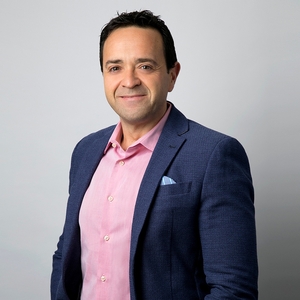 |
CEO and Co-Founder Neurala |
Machine Vision Made Simple
Eric Hershberger, Principal Application Engineer, Cognex
Topic(s): Getting Started with Automation Machine Vision, Imaging & Inspection
This will be an interesting talk describing the top 10 tips and tricks that I have used over a long career to make integrating machine vision simpler. I will discuss PLC logic, the use of standard templates, and working with applications people to identify pain points and problems with your machine vision integration. I will include real-world applications and dive into a few of the items that I use in my day job to solve customer applications and make their integration life easier. I will showcase the tools and equipment that can be used to make your machine vision application work for a long time. |
|
 |
Principal Application Engineer Cognex |
Introduction to Machine Learning
Andrew Long, CEO, Cyth Systems
Topic(s): Machine Vision, Imaging & Inspection
Intro to Machine Learning |
|
 |
CEO Cyth Systems |
Understanding Inertia and Reflected Inertia
Keith Knight, Director of Business Development, Invio Automation
Topic(s): Motion Control & Conveyance Motors & Drives
The importance of inertia in electro-mechanical motion control systems and how the inertia of the components in a motion control system affects its performance. |
|
 |
Director of Business Development Invio Automation |
Development of A Low Profile, Power Dense Actuator to Meet the Demands of Current Robot Designs
Brian Coyne, VP of Engineering, Harmonic Drive LLC
Topic(s): Motion Control & Conveyance Motors & Drives Robotics: Applications, Systems & Innovations
This session will discuss Robotics engineers’ need for motion control solutions that offer leading edge performance and reliability while navigating around tight design constraints. Power density continues to be a cornerstone in robot actuator design, but this is often compromised by additional functionality required of actuators and their cabling. We will examine a new solution to these problems through the development of Harmonic Drive’s LPA-20 actuator that optimizes power density while integrating a servo drive with options for CANopen® or EtherCAT® communication protocols. |
|
 |
VP of Engineering Harmonic Drive LLC |
Improve Uptime and Save Money – Getting Started with Condition Monitoring
Tom Knauer, Global Strategy Manager - Robotics & Automation, Balluff GmbH
Topic(s): AI & Smart Automation Automation Systems, Design & Integration
Condition monitoring and predictive maintenance are “hot topics” in factory automation. However many facilities still use preventative maintenance or “run to fail” approaches. Moving to a condition monitoring or predictive maintenance approach can be intimidating, concerns include:
So why should manufacturers implement condition monitoring or predictive maintenance?
It can be easier to get started by gaining a basic understanding of:
I’ll give an overview of these key topics, and will then provide some advice and processes on how to get started with condition monitoring and predictive maintenance. |
|
 |
Global Strategy Manager - Robotics & Automation Balluff GmbH |
No-Code Robot Programing for End Users: Simplifying Automation
Josh Cloer, Director of Sales, Mujin
Topic(s): AI & Smart Automation Autonomous Mobile Robotics Logistics & Supply Chain Automation
In today's rapidly evolving industrial landscape, automation is the key to efficiency and competitiveness. However, the traditionally complex process of programming industrial robots has often been a barrier for end users seeking to harness its potential. This presentation explores a revolutionary approach to automation that empowers end users to take control. |
|
 |
Director of Sales Mujin |
Robotics Standards Update
Carole Franklin, Director of Standards Development, Robotics, Association for Advancing Automation
Maren Roush, Manager of Standards Development, Robotics, Association for Advancing Automation (A3)
Topic(s): Automation Safety Getting Started with Automation Robotics: Applications, Systems & Innovations
Get the latest information on robotic standards from the experts. Join members of A3's Robotic Standards team, Carole Franklin and Maren Roush for this important update. |
|
 |
Director of Standards Development, Robotics Association for Advancing Automation |
 |
Manager of Standards Development, Robotics Association for Advancing Automation (A3) |
Advances in AI-Powered Machine Vision Inspection
Arye Barnehama, CEO, Elementary
Ed Goffin, Vice President, Product Marketing, Pleora Technologies
Eric Hershberger, Principal Application Engineer, Cognex
Gareth Powell, Product Director, Prophesee
Rajesh Iyengar, Co-Founder and CEO, Lincode Labs Inc.
Topic(s): AI & Smart Automation Machine Vision, Imaging & Inspection
In today's rapidly evolving industrial landscape, the convergence of artificial intelligence and machine vision has opened up a world of opportunities. From improving quality control and enhancing safety protocols to optimizing production processes and increasing efficiency, AI-powered machine vision is revolutionizing the way manufacturing and industrial production operate. Join us for this discussion with industry experts that will shed light on the latest trends, real-world use cases, and best practices that are driving these transformative technology: Closing the Loop on Quality Using AI-Powered Vision and Analytics Your First Steps to AI Automation Why AI Wins the Inspection Race for High-Speed Factory Automation Revolutionizing Machine Vision: Harnessing Event-Based Vision for Industrial Automation Systems Smart Visual Quality Inspection with Artificial Intelligence |
|
 |
CEO Elementary |
 |
Vice President, Product Marketing Pleora Technologies |
 |
Principal Application Engineer Cognex |
 |
Product Director Prophesee |
 |
Co-Founder and CEO Lincode Labs Inc. |
Designing Linescan Vision Systems
Dale Deering, Senior Director, Business Development, Teledyne
Topic(s): Machine Vision, Imaging & Inspection
In this course, you learn about Line-scan imaging, and how using a scanning technique can be beneficial for efficient image capture of moving objects. Topics cover components for line-scan image acquisition, when to use line-scan, how to achieve optimum results, and trends in the industry. When you complete this course, you will be able to recognize candidate applications for line-scan imaging and understand how to develop and implement line-scan solutions. |
|
 |
Senior Director, Business Development Teledyne |
Introduction to Robot Risk Assessment
Jeff Fryman, Principal Consultant, Association for Advancing Automation
Topic(s): Automation Safety Getting Started with Automation Robotics: Applications, Systems & Innovations
There are more than 2.7 million industrial robots safely operating in factories worldwide, and the robotics industry can take pride in its impressive safety record. For nearly forty years, A3 Robotics – formerly the Robotic Industries Association – has taken a lead role in assuring that the robotics industry continues to proactively assess the safety environment and provide safety resources as robotic applications continue to expand. At the forefront of A3 Robotics’ leadership role in industrial robot safety is the development of the ANSI/RIA R15.06-2012 safety standard. |
|
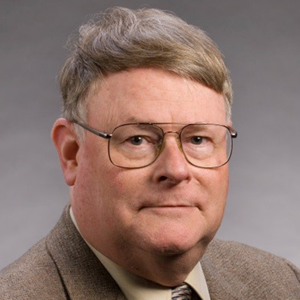 |
Principal Consultant Association for Advancing Automation |
The Importance of Signal to Noise in SWIR Imaging: Why Is My SWIR Image Black?
Martin H. Ettenberg, CEO/President, Princeton Infrared Technologies, Inc.
Topic(s): Machine Vision, Imaging & Inspection
In this talk, we will delve into the fundamental significance of Signal to Noise Ratios (SNR) in Short Wave Infrared (SWIR) imaging and detection applications. The choice of SWIR camera holds an important role in shaping the outcomes of detection and imaging, especially when dealing with high frame rates where SNR is critical. Our exploration will encompass an in-depth analysis of dark current, read noise, quantum efficiency, and frame rate, shedding light on their substantial influence on the detection of SWIR phenomena in both imaging and spectroscopic applications. |
|
 |
CEO/President Princeton Infrared Technologies, Inc. |
The Next Frontier of Automation: Human-Centric Robots
Melonee Wise, CTO, Agility Robotics
Topic(s): Autonomous Mobile Robotics Robotics: Applications, Systems & Innovations
The maturity of the robotics industry has been profound over the past 10 years. Vision systems have improved drastically, computing power has moved to the edge, the cost of parts has become less expensive, and developments with AI and engineering have surpassed what was previously imaginable. As a result, innovative companies have built advanced robotic systems that have found success in the commercial world – robots are no longer confined to research and university labs. It is well-known that one industry has been leading the charge in adopting these advanced robotic solutions: warehousing and logistics. Warehousing has some of the most advanced automated solutions, but many have been deployed in silos and have created islands of automation. Hear from Melonee Wise, CTO of Agility Robotics and veteran robotics pioneer, on the current and future state of robotics in the warehousing industry. Learn how to prepare your warehouse for the next phase of robotics – human-centric, humanoid robots – and how to connect existing islands of automation. |
|
.jpg) |
CTO Agility Robotics |
The Road to Mass Adoption of Robotics
Søren Peters, CEO, HowToRobot
Topic(s): Automation Systems, Design & Integration Getting Started with Automation Robotics: Applications, Systems & Innovations
The growth potential of robotics is immense. Yet, many businesses – including SMEs – are still waiting for the right opportunity to invest.
|
|
 |
CEO HowToRobot |
Using AI for Semantic Segmentation in Uncontrolled Environments
Daniel Lau, Professor, University of Kentucky
Topic(s): AI & Smart Automation Machine Vision, Imaging & Inspection
Livestock management is a growing market for 3D video, but using AI to detect and monitor animals from depth video is a particularly challenging problem given the lack of labeled data sets and pre-trained AI models. So to do so, one needs to collect data, label the data, train the AI model, and then export the AI model to something one can integrate into OpenCV or OpenVino libraries. Each of these steps is essential to achieving accurate segmentation, and if not given the appropriate time and energy, could spell doom for the entire project. So in this presentation, I share personal experiences with training an AI model from a livestock video and relate what worked and what didn't so you can avoid the mistakes while enjoying my successes in your projects. |
|
 |
Professor University of Kentucky |
Introduction to Magnetism and Motor Basics
Mark Holcomb, Owner, Dynamic Systems Engineering
Topic(s): Motion Control & Conveyance Motors & Drives
Basics of magnetics and the types of magnets found in motors. Overview of the basic functions and styles of electric motors commonly used in industrial automation, including the operating difference between brushed, brushless, step, AC induction, and direct drive motors. |
|
 |
Owner Dynamic Systems Engineering |
The Fundamentals of Camera & Image Sensor Technology
Philip Freidin, Applications Engineer, IDS Imaging Development Systems
Topic(s): Machine Vision, Imaging & Inspection
Gain an understanding of digital camera principles. Find out about different camera types and their capabilities. Learn about what digital interfaces these cameras use, from Gigabit Ethernet to Camera Link HS. Other topics include how image sensors capture light, basic understanding of image quality terms, digital camera parameterization, and the capabilities of monochrome versus color sensors. |
|
 |
Applications Engineer IDS Imaging Development Systems |
Automation 301: Improving Key Steps in Your Automation Process
Scott Marsic, Group Product Manager, Epson Robots
Topic(s): Automation Systems, Design & Integration Getting Started with Automation The Business Of Automation
Everything built is created through a manufacturing process. It's never just one step, but rather a series of activities and actions that result in a finished product. These steps are often intertwined in varying degrees of order and linearity, even transcending multiple facilities and multiple suppliers. |
|
 |
Group Product Manager Epson Robots |
Autonomous Mobile Robots in Healthcare
Jacob Dison, Technical Specialist II, Mayo Clinic
Topic(s): Autonomous Mobile Robotics Emerging Applications in Automation
Healthcare is a burgeoning field for autonomous mobile robots, and AMRs present several opportunities to rethink how care is delivered, but the healthcare environment also poses several challenges to the wide-scale adoption of AMRs. This session will discuss some of the driving forces behind the shift to AMRs in healthcare, common use cases, tips on how to get started if you are thinking of deploying AMRs in your facility, as well as many of the challenges you are likely to encounter. |
|
 |
Technical Specialist II Mayo Clinic |
Digital Thread and Digital Twins Used to Control and Monitor Real-Time Manufacturing Process at Boeing
Wen Jiang, Boeing Designated Expert(BDE) in Factory Automation, Boeing Commercial Airplanes
Topic(s): AI & Smart Automation Automation Systems, Design & Integration
This presentation will demonstrate how the Digital Thread and Digital Twins are used to control and monitor the real-time manufacturing of the Super Profiler Cell and Henry Coolant Filter process line at Boeing Portland. The demo project in this presentation used Siemens’ TIA Portal to create a 3D digital twin model and control program Via Profinet communication protocol. It will work in a real-time 3D digital twin model with a machine controller. |
|
 |
Boeing Designated Expert(BDE) in Factory Automation Boeing Commercial Airplanes |
How to Calculate ROI of Automation When the Investment is Zero with Robots-as-a-Service
Alex Koepsel, Sr Product Marketing Manager, Formic
Topic(s): Robotics: Applications, Systems & Innovations The Business Of Automation
As a zero CapEx and pay-as-you-go model, the automation approach known as "Robots-as-a-Service" (RaaS) disrupts the conventional way of justifying automation investment. With RaaS, how do Operations and Engineering Managers then calculate the business value of automation when it is rented instead of purchased? In this case, the best calculation approach uses a different comparison to the current operation financials, and it can be summarized into a single Net Present Value for comparison against capital purchases if desired. Attend this session to learn how! |
|
 |
Sr Product Marketing Manager Formic |
Positioner Selection and Motor Sizing
Jim Wiley, Product Manager, Parker Hannifin
Topic(s): Motion Control & Conveyance Motors & Drives
How to select an appropriate single-axis positioner for specific application requirements based on loading, environment, motion profile, and positioning performance. Overview on determining the required torque, speed, and inertia of the motor/drive system that is needed for your application. |
|
 |
Product Manager Parker Hannifin |
AI in the Warehouse: What You Really Need to Know
Gina Chung, Vice President, Corporate Development, Locus Robotics
Topic(s): AI & Smart Automation Autonomous Mobile Robotics Logistics & Supply Chain Automation
You’ve heard about artificial intelligence (AI) and have probably seen many companies touting how their products use AI to help your warehouse. We’re going to dive deep into separating the facts from fiction when it comes to AI in the warehouse. Attend this session to learn about the impact, benefits, and considerations of implementing AI in your warehouse.
Understanding these perspectives and the true reality of AI helps warehouse managers separate the fluff from the facts and learn how to use AI for good. |
|
 |
Vice President, Corporate Development Locus Robotics |
Collaborative Robotics: Finding Your Perfect Cobot Application
Nolan Shelton, Cobot Sales Specialist, ABB Inc.
Topic(s): Collaborative Robotics
In this session, attendees will delve into the diverse applications of collaborative robots (cobots). The presentation will commence with an exploration of cobot safety measures, followed by an analysis of optimal application scenarios. Finally, attendees will be introduced to a variety of cobot application examples, including machine tending and welding processes. |
|
 |
Cobot Sales Specialist ABB Inc. |
High-Speed, Real-Time Machine Vision
Perry C. West, President, Automated Vision Systems, Inc.
Topic(s): Machine Vision, Imaging & Inspection
This course gives you the insights to achieve the speed and performance you need in your vision systems including system architecture, programming tips, and common challenges. You will understand the ways high-speed is determined and the different real-time performance requirements. The course follows two vision system designs to see how high-speed and real-time techniques are put into practice. |
|
 |
President Automated Vision Systems, Inc. |
Mistakes to Avoid When Using Robots for Finishing or Material Removal
Michael Haas, Vice President, FerRobotics
Topic(s): Material Removal, Grinding & Abrasives Robotics: Applications, Systems & Innovations
Finishing and material removal automation is not easy. Applications look easy on videos, but to implement them properly into production systems to get a stable repeatable result requires huge knowledge about robotic finishing. |
|
 |
Vice President FerRobotics |
Protect and Enhance Your Imaging System with Optical Filters
Georgy Das, Director of Systems & Training, Midwest Optical Systems
Topic(s): Machine Vision, Imaging & Inspection
Machine Vision Filters play a critical role in 3D systems like LED/Laser Metrology. MidOpt® Optical Filters are designed to enhance contrast and improve resolution in these types of applications by selectively passing light from a specific range of wavelengths while blocking unwanted light. This helps to reduce interference and increase signal-to-noise ratio, leading to more accurate measurements and improved system performance.
|
|
 |
Director of Systems & Training Midwest Optical Systems |
Simulation and Virtual Commissioning for Discrete Production Systems
Colm Gavin, Portfolio Development Manager, Siemens
Suresh Rama, Portfolio Development Executive, Siemens
Topic(s): AI & Smart Automation Automation Systems, Design & Integration
Machine and line builders face many challenges today to deliver and integrate discrete production systems. How can they speed up the commissioning of machines? How can unplanned machine behavior be avoided? How can mechanical defects or software errors be detected at an early stage? What can be done to tackle the shortage of skilled workers & the decreasing willingness to travel? |
|
 |
Portfolio Development Manager Siemens |
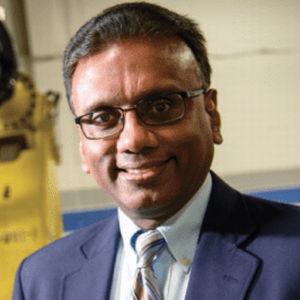 |
Portfolio Development Executive Siemens |
Updates on Machine Vision Standards
Bob McCurrach, Director of Standards Development, Association For Advancing Automation
Suprateek Banerjee, Head of Standardization, Robotics and Automation, VDMA e.V.
Topic(s): Getting Started with Automation Machine Vision, Imaging & Inspection
Get the latest information on global vision standards from the experts. Join Bob McCurrach from A3 Vision & Imaging and other vision experts for this important update. |
|
 |
Director of Standards Development Association For Advancing Automation |
 |
Head of Standardization, Robotics and Automation VDMA e.V. |
Advanced Vision Guided Robotics
David Bruce, Engineering Manager, FANUC America
Topic(s): Machine Vision, Imaging & Inspection
This course covers 2D & 3D machine vision camera calibration for machine guidance including for industrial robots together with basic information on the types of industrial robots in use today. Along with the methods for representing 3D positional data for both machine vision and industrial robotics and how to ensure a machine vision system provides useful positional data to an industrial robot for a Vision Guided Robot (VGR) application. The course also presents how to implement a fixed-mounted and robot-mounted 2D/3D VGR application as well as examples of each. |
|
 |
Engineering Manager FANUC America |
AGV Validation
Rushiraj Patwardhan, Safety Engineer, Pilz Automation Safety L.P
Topic(s): Automation Safety Autonomous Mobile Robotics
The presentation aims to provide attendees with an overview of the safety requirements for AGV and its validation. The course will focus on the verification and validation of AGV based on applicable standards. The attendees will have an understanding of the steps involved in validation to ensure compliance with current standards and requirements. |
|
 |
Safety Engineer Pilz Automation Safety L.P |
COBOTs Make Fiber Laser Welding Easy
Michael Sharpe, Executive Director - Materials Joining Sales, FANUC America Corporation
Topic(s): Collaborative Robotics
Collaborative Robots (Cobot) are all the rage in many application areas because of their ease of use and simple operation. Teaching a Cobot through lead through method and programming from a tablet icon-based programming makes this the easiest robot to use. Recently, handheld lasers entered the market providing high power and excellent beam quality for welding and cleaning applications. These lasers have an ease-of-use factor enabling almost anyone to make a quality laser weld. NEW software and hardware developments combine the high value and low operating cost of Cobots and Handheld Lasers improving the productivity and application use for these high tech easy-to-use machines. This talk will cover Cobot operation, handheld laser ease of use, and the synergy of both products showcasing the latest in robotic laser automation. |
|
 |
Executive Director - Materials Joining Sales FANUC America Corporation |
Designing Autonomous AI Agents (Laptop recommended for attendees)
Kence Anderson, CEO & Co-Founder, Composabl, Inc.
Topic(s): AI & Smart Automation
NOTE: Laptop needed to participate in the course’s hands-on exercise. |
|
 |
CEO & Co-Founder Composabl, Inc. |
Humanoid Robots: The Next Wave of Versatile Automation
Jeff Cardenas, Co-founder and CEO, Apptronik
The manufacturing industry is experiencing a tight labor market as fewer and fewer workers are available to – or want to – fill physically challenging, laborious positions. In this session, Apptronik’s co-founder and CEO Jeff Cardenas will explore how supplementing workers with humanoid robots powered by AI technology can increase employee productivity, decrease injuries on the job and give workers the opportunity to focus on higher-level tasks at work. |
|
 |
Co-founder and CEO Apptronik |
Image Processing Fundamentals
Heiko Eisele, President, MVTec USA
Topic(s): Machine Vision, Imaging & Inspection
This course will cover 2D & 3D machine vision camera calibration for machine guidance including for industrial robots and basic information on the types of industrial robots in use today. Along with the various methods for representing 3D positional data for both machine vision and industrial robotics and how to ensure a machine vision system will provide useful positional data to an industrial robot for a Vision Guided Robot (VGR) application. Details of how to implement a fixed mounted and robot mounted 2D/3D VGR application as well as examples of each will also be presented. |
|
 |
President MVTec USA |
Revolutionizing Industrial Metrology: How Advanced 3D Laser Sensors Are Changing the Game
Gretchen Alper, Business Director, AT - Automation Technology, Inc.
Topic(s): Machine Vision, Imaging & Inspection
In this presentation, we will explore the latest trends and developments in sensor technology, specifically focusing on laser triangulation sensors and their impact on metrology applications. We will discuss how advancements in resolution, speed, and on-sensor processing are pushing the limits of sensor-to-FPGA interfaces, leading to more efficient and cost-effective solutions. The presentation will also examine the benefits of customized sensor configurations based on standard sensor modules and the emergence of multi-feature sensors that enable advanced multi-channel evaluations while reducing system costs.? |
|
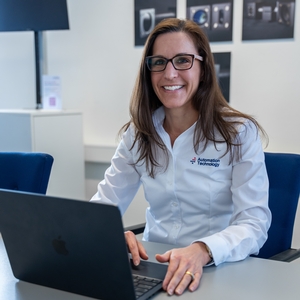 |
Business Director AT - Automation Technology, Inc. |
Digital Servo Amplifier Basics
Ronnie Belcher, Product Training Engineer, Yaskawa America
Topic(s): Motion Control & Conveyance Motors & Drives
The basic operation of a digital servo amplifier, including servo control loops, tuning a servo system, defining system bandwidth, and how to select the proper amplifier for applications. Basics of the major networks/field busses and advantages/disadvantages of each. |
|
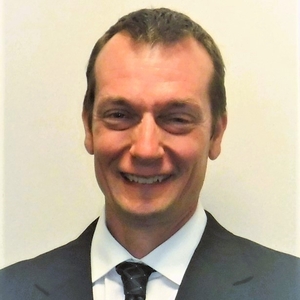 |
Product Training Engineer Yaskawa America |
One Robot for Any Task
Daniela Rus, Professor of Electrical Engineering and Computer Science, MIT
The digitization of practically everything coupled with advances in machine learning, the automation of knowledge work, and advanced robotics promises a future with democratized use of machines and wide-spread use of AI, robots and customization. While the last 60 years have defined the field of industrial robots and empowered hard-bodied robots to execute complex assembly tasks in constrained industrial settings, the next 60 years could be ushering in our time with Pervasive robots that come in a diversity of forms and materials, helping people with physical and cognitive tasks. |
|
 |
Professor of Electrical Engineering and Computer Science MIT |
Motion Controllers, Programming, and System Design Basics
Jim Wiley, Product Manager, Parker Hannifin
Topic(s): Motion Control & Conveyance Motors & Drives
Overview of the software and hardware elements necessary to build a motion system, and how to integrate motion with other systems when designing a machine. Basic motion control software and programming languages. |
|
 |
Product Manager Parker Hannifin |
How Electric Motor Design Innovation Will Advance Automation
Robert Luchars, EVP, ECM PCB Stator Tech
Topic(s): Motors & Drives
Advancing 21st century automation will require a nextgen upgrade to electric motor design, optimization, and manufacturing. MACRO TRENDS
ELECTRIC MOTOR TECH AND INNOVATION
REAL WORLD APPLICATION
Please join this engaging presentation that will include Q&A on advanced electric motor technology and CAD for automation. |
|
.png) |
EVP ECM PCB Stator Tech |
Leveraging AI to Deliver Human-Centered Automation
Satyandra K. Gupta, Co-Founder & Chief Scientist, GrayMatter Robotics
Topic(s): AI & Smart Automation Robotics: Applications, Systems & Innovations
Humans have always played an important role in manufacturing enterprises. Humans offer unparalleled flexibility to quickly adapt and have creative abilities to handle new challenges. Humans are also the best at deciding what features offer the highest value to potential customers. Humans will continue to play an important role in the next generation of manufacturing as we move from mass-produced products to cost-effective customization and personalization. Deploying automation without considering its interaction and impact on humans will simply not work. We need human-centered automation technologies that increase human productivity, reduce health risks for humans, and improve quality of life through innovation. |
|
 |
Co-Founder & Chief Scientist GrayMatter Robotics |
Mobile Robot Interoperability Standards
Daniel Theobald, Founder and Chief Innovation Officer, Vecna Robotics
Thomas Ryden, Executive Director, MassRobotics
Topic(s): Autonomous Mobile Robotics Robotics: Applications, Systems & Innovations
With autonomous mobile robots (AMR) gaining in popularity, more and more end users are finding themselves in the situation of managing a heterogeneous fleet of AMRs. This has caused the need for interoperability among these systems. This panel will discuss the various standards that encompass the operation of AMRs and/or Automated Guided Vehicles (AGV) and the latest developments in these standards. |
|
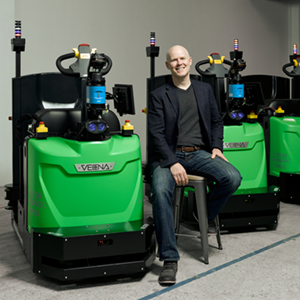 |
Founder and Chief Innovation Officer Vecna Robotics |
 |
Executive Director MassRobotics |
The Fusion of 3D Vision and AI in Inspecting Robotic Welds: A Paradigm Shift in Quality Control
Collin Bristow, Territory Manager, LMI Technologies
Topic(s): Automation Systems, Design & Integration Machine Vision, Imaging & Inspection Robotics: Applications, Systems & Innovations
Introduction
Conclusion |
|
 |
Territory Manager LMI Technologies |
Why Ease-of-Use is Key for Flexible Robot Solutions…and How to Achieve It
Martin Naumann, CEO, drag and bot GmbH (part of KEBA group)
Topic(s): AI & Smart Automation Robotics: Applications, Systems & Innovations
The session will give an overview of why ease-of-use is important for flexible robot solutions and how it can be achieved followed by the example of an easy-to-use flexible robot solution by Zimmer Group, the ZiMo (www.zimmer-group.com/en/technologies-components/system-technology/zimo-the-freely-configurable-handling-system).
Target groups
Solutions for easy-to-use interfaces.
Example: ZiMo flexible robot cell |
|
 |
CEO drag and bot GmbH (part of KEBA group) |
Non-Visible Imaging: Infrared Technology and Applications
Martin H. Ettenberg, CEO/President, Princeton Infrared Technologies, Inc.
Topic(s): Machine Vision, Imaging & Inspection
Non-visible imaging methods offer unique benefits for a variety of vision tasks. In this session, you’ll learn more about infrared and thermal techniques and better understand if non-visible imaging solutions are right for your specific needs. |
|
 |
CEO/President Princeton Infrared Technologies, Inc. |
Vision System Design
David Dechow, Industrial Factory Solutions Architect, Motion AI
Perry C. West, President, Automated Vision Systems, Inc.
Topic(s): Machine Vision, Imaging & Inspection
Ultimately the value of any machine vision technology lies in the successful implementation of a systems solution for a task in an automated process. The knowledge gained in cameras, lighting, optics, and image processing is the foundation required to move on to the successful design of a working machine vision system. In this course, you will learn the role of machine vision systems design in the broader task of systems integration and the general steps and strategies involved in the design of a vision system, including selection of components in typical use cases, and specification of the implementation of those components. The information provided will enable you to participate in and support a team delivering practical machine vision to plant floor automation. |
|
 |
Industrial Factory Solutions Architect Motion AI |
 |
President Automated Vision Systems, Inc. |
8 Key Considerations When Assessing Autonomous Mobile Robot (AMR) Vendors
Jason Okerman, Staff Product Manager, OTTO Motors
Topic(s): Advances in Material Handling Automation Systems, Design & Integration Autonomous Mobile Robotics
The global marketplace is highly competitive, with constant pressure to innovate in order to avoid falling behind. Manufacturers are asking themselves what changes are needed to stay competitive, what expectations their customers have, and what their industry will look like in five years. The answer is automation. Since material handling is one of the biggest consumers of labor in a manufacturing operation, leading manufacturers have implemented autonomous mobile robots (AMRs) to save money, improve efficiency, keep people safe, and ensure business continuity. |
|
.png) |
Staff Product Manager OTTO Motors |
AI/Machine Learning Applications in Robotics
Matthew Jones, VP of US Sales and Operations, Micropsi Industries USA, Inc.
Topic(s): AI & Smart Automation Getting Started with Automation Robotics: Applications, Systems & Innovations
While robotics and AI have been major buzzwords in both the automation industry, but also in a larger scope over the last few years, many factories are still learning how to actually harness the power of AI to their advantage. In this presentation, Matt will share some basic definitions of "What is AI?" and share concrete examples of where AI can be used to make manufacturing businesses more productive, resilient, and adaptive to the future. |
|
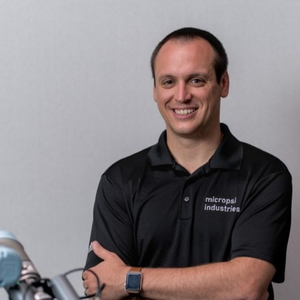 |
VP of US Sales and Operations Micropsi Industries USA, Inc. |
Emerging Tactile Sensing Technology Solving the Challenges in Robot & Cobot Safety
Utku Buyuksahin, President & CTO, Sensobright Industries LLC
Topic(s): Automation Safety Collaborative Robotics Robotics: Applications, Systems & Innovations
In the United States alone there were nearly 50 fatalities and tens of thousands of injuries attributed to robots and cobots in the workplace over the last 25 years. Despite great leaps in safety solutions, accidents are still happening because of the lack of more effective surrounding sensing. Safety concerns force manufacturers to slow down the robots and cobots to keep humans safe which leads to loss of efficiency and still doesn’t prevent all accidents. Some manufacturers are using stationary area scanners or cameras, which leave areas around the robot unprotected with limited coverage, others are using solutions like air pressure sensors that require a collision with a human or object to occur before the system will shut down. |
|
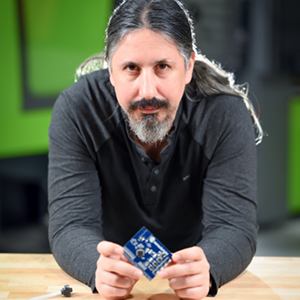 |
President & CTO Sensobright Industries LLC |
Transform Your Workforce into a Competitive Advantage with Augmented Reality (AR)
Paul Ryznar, Founder & CEO, LightGuide
Topic(s): AI & Smart Automation
The manufacturing industry is facing several challenges, including labor shortages, increasing competition, and changing customer demands. Augmented reality (AR) is helping manufacturers overcome these challenges by bridging the skills gap, equipping workers with the tools they need to excel in complex tasks, and making manufacturing jobs safer and more efficient. By strategically leveraging AR, manufacturers can optimize production processes and gain a competitive edge in the market. |
|
 |
Founder & CEO LightGuide |
Transforming EV Manufacturing with Advanced Automation
Paul Stephens, Manufacturing Transformation Lead, Ford Motor Company
Topic(s): Automation Systems, Design & Integration Robotics: Applications, Systems & Innovations
Ford Motor Company is on the cusp of a transformative era in automotive manufacturing with the development of the all-new Blue Oval City assembly site, set to redefine global standards for advanced and efficient production. This presentation will provide an in-depth exploration of the groundbreaking advancements driving this transformation, with a specific focus on the integration of Industry 4.0 technologies and an advanced autonomous logistics strategy that is propelling the Blue Oval City to the forefront of innovation. At the heart of this evolution is the seamless integration of Industry 4.0 technologies, including the utilization of artificial intelligence, big data analytics, and the Internet of Things (IoT) to create a connected and intelligent manufacturing environment within the site. This convergence of cutting-edge technologies empowers Ford Motor Company to optimize production processes, enhance quality control, and maximize operational efficiency, setting a new benchmark for automotive manufacturing on a global scale. Furthermore, the launch of an advanced autonomous logistics strategy has been instrumental in revolutionizing the movement of parts and materials within Blue Oval City. By harnessing next-generation "natural navigation / VSLAM" technology, Ford has enabled 100% autonomous, dock-to-line delivery, marking the largest deployment of its kind in North America. The seamless controls, IT, and robotic integration of these Autonomous Mobile Robots (AMRs) into Blue Oval City processes not only enhance precision and efficiency but also signify the future of "lights-out" manufacturing, cementing Ford's position as an industry leader in advanced automation and autonomous operations. In this comprehensive presentation, we will delve into the intricacies of Ford Motor Company's innovative approach to next-gen manufacturing, the incorporation of Industry 4.0 technologies, and the strategic vision driving the evolution of the Blue Oval City. Join us as we unveil the pioneering journey towards redefining the industry standard and setting new benchmarks for excellence in automotive manufacturing. |
|
 |
Manufacturing Transformation Lead Ford Motor Company |
CMCP Course Review and Exam Prep
Topic(s): Motion Control & Conveyance Motors & Drives
Review the CMCP courses and prepare for the certification exam. |
Advanced Color Machine Vision & Applications
Romik Chatterjee, VP Business Development, Graftek Imaging
Topic(s): Machine Vision, Imaging & Inspection
Explore the different levels of image quality at the sensor level. Details relating to quantum efficiency, dark noise, signal to noise ratio will be discussed in detail. In addition to topics related to area scan cameras, the proper usage of line scan and TDI cameras will be reviewed. Sensor size classification and relationship to the camera’s lens mount will be covered. |
|
 |
VP Business Development Graftek Imaging |
Cobots in Machine Tending: How You Can Succeed with Deployment
Justin Crump, Application Engineer, Large Accounts, Universal Robots
Topic(s): Automation Systems, Design & Integration Collaborative Robotics
Collaborative robots excel at loading and unloading machined products, and their [benefits] have revolutionized manufacturing for high-mix, low-volume machine shops. Nearly twenty years after their “launch,” cobots are increasing productivity for manufacturers of all sizes across the machining and metal fabrication industry. Explore the benefits and wide-ranging practical applications of cobots in machine tending with Justin Crump, Application Engineer at Universal Robots. He will use this session to share real life case studies of cobots tending machines, advise on best practices that streamline manufacturing processes powered by cobots, and present emerging and cutting-edge technologies in the collaborative automation space. |
|
 |
Application Engineer, Large Accounts Universal Robots |
Introduction to Mobile Robot Risk Assessment
Robert Bollinger, Owner, Dynamic Horizons Automation Solutions LLC
Topic(s): Automation Safety Autonomous Mobile Robotics
Risk assessment is a key step in the development of safety solutions for all robot systems. When IMRs are part of the system, the risk assessment approach needs to be expanded beyond the typical task/hazard pairs of traditional systems. This session explores the additional scope to be considered when autonomous mobility is introduced. |
|
 |
Owner Dynamic Horizons Automation Solutions LLC |
Manufacturer’s Back Office Intelligent Automation Creates Labor Efficiencies
Bill Boucher, Partner, WIPFLI
Jessica Barnas, Partner, Wipfli LLP
Topic(s): The Business Of Automation
For manufacturing companies, the talent and labor shortage we are all experiencing is not limited to the engineering group or the production floor. Good accounting, human resource, and support staff are hard to find, and as Robotic Process Automation (RPA) becomes more mainstream in the modern economy, small and midsize manufacturers are looking for new transactions to automate in order to improve efficiency, reduce costs and develop new sources of revenue. This has led to an explosive growth in the number and scope of tasks that are automated. During this presentation, we will look to expose some of the most common automated business transactions and what the future of automation holds for small to midsize manufacturers around the world. |
|
 |
Partner WIPFLI |
 |
Partner Wipfli LLP |
Parallel Structured Light - High Accuracy 3D Sensing for Automation in Motion
Frantisek Takac, Strategic Partners Manager, Photoneo s. r. o.
Topic(s): Machine Vision, Imaging & Inspection
There are several 3D sensing technologies to choose from, each with its advantages and disadvantages and as such, each is suitable for different applications. However, regarding the area capture and 3D reconstruction of scenes in motion, one technology can provide both high acquisition speed and high resolution and accuracy – the Parallel Structured Light. The technology provides the fast speed of ToF systems and the high resolution and accuracy of structured light systems. |
|
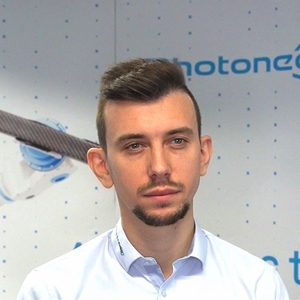 |
Strategic Partners Manager Photoneo s. r. o. |
Simple Smart Cameras for AI and Industry 4.0
Michael Nagle, Machine Vision Specialist, Baumer
Topic(s): AI & Smart Automation Machine Vision, Imaging & Inspection
The widespread use of imaging technology requires easy-to-use, powerful, and flexible smart cameras to simplify system design and provide a low total cost of ownership (TCO). Smart cameras with integrated AI can optimize automation processes to save companies money and time, but they are currently being underutilized in many industries. |
|
 |
Machine Vision Specialist Baumer |
Worker-Centric Mobile Robot Integration: Unlocking Manufacturing Excellence
Denise Stafford, Business Development Manager, KUKA Robotics
Topic(s): Autonomous Mobile Robotics Building Tomorrow’s Workforce
Recent advancements in mobile robot technology have made it increasingly accessible for integration into manufacturing and production environments. Reduced investment costs and the persistent challenge of attracting and retaining manufacturing workers have fueled a surge in mobile robot projects. Despite the available technology and funding, a substantial number of robotic process automation projects worldwide encounter difficulties, with Ernst and Young's study reporting challenges and setbacks ranging from 30% to 50%. |
|
 |
Business Development Manager KUKA Robotics |
Enabling A New Era of Motor Design
Bernhard Lichtenauer, Head of Marketing and Product Management Automation Technology II, Dr. Johannes Heidenhain GmbH
Topic(s): Motors & Drives
Encoders or resolvers have looked more or less the same all over the world for decades. Additionally, they need encapsulation to protect against environmental influences. How could a new way of encoder/motor integration provide the next level in motor design and eliminate the current restrictions? Machine-down situations are major horror scenarios for every operation. Money is lost because of strict maintenance scheduling or at worst because no maintenance schedule exists at all. Errors often expressed through vibrations of the drive train. External sensors are often a non-starter because there is too much effort to integrate, hardware or software-wise. What if a bearingless encoder can provide additional information about the system itself and through novel design concepts, improve motor performance by removing the need for motor de-rating? |
|
 |
Head of Marketing and Product Management Automation Technology II Dr. Johannes Heidenhain GmbH |
Enabling Smart Factories with 5G-Driven Computer Vision – A Case Study
Alan Minney, Global Lead Strategic Partnerships, Enterprise & Emerging Business, Ericsson
Sudhanshu Gaur, Vice President of R&D, Hitachi America and Chief Architect, Hitachi Astemo Americas
Vish Kolur, Senior Director, Manufacturing Solutions, Ericsson
Topic(s): AI & Smart Automation
Automotive component manufacturer, Hitachi Astemo, is continually exploring innovative solutions to help its customers improve quality, efficiency, and productivity. The company’s research and engineering teams wanted to explore potential use cases for 5G technology in the manufacturing industry and engaged Ericsson and AWS to collaborate in that effort. After identifying several potential use cases for 5G-enabled machine vision, Hitachi, Ericsson, and AWS set up a trial of a model private 5G wireless infrastructure at Hitachi Astemo’s manufacturing plant in Kentucky. |
|
 |
Global Lead Strategic Partnerships, Enterprise & Emerging Business Ericsson |
 |
Vice President of R&D, Hitachi America and Chief Architect Hitachi Astemo Americas |
 |
Senior Director, Manufacturing Solutions Ericsson |
Expanding Your Reach - Extending the Work Envelope for 6-axis Robots
Matt Berch, Sr. Account Manager, Gudel Inc.
Topic(s): Automation Systems, Design & Integration Robotics: Applications, Systems & Innovations
Industrial robots play a pivotal role in modern manufacturing, but their effectiveness hinges on their defined reach or working envelope based on axis articulation and design geometry. Some applications require you to expand the reach of your robot to perform your process, enhance your system design, increase speed, or increase robot utilization. This seminar explores various strategies for expanding robot reach using Rail Transfer Units (RTUs, also referred to as tracks) and gantries, addressing critical aspects such as mechanisms and area of reach, system design considerations, installation requirements, and controls, and will present advantages and disadvantages of each solution. |
|
 |
Sr. Account Manager Gudel Inc. |
Robotic End Effector Technologies Adapted for Special Applications
Blake Hall, Systems Engineering Project Manager, SCHUNK
Topic(s): Advances in Material Handling Automation Systems, Design & Integration Robotics: Applications, Systems & Innovations
Automation technology is advancing at a fast pace. New technologies together with existing tried and true technologies build a strong offering of robotic end effectors to choose. Many gripping technologies are developed with flexibility in mind because most automation users can benefit from re-deploying an automated cell if their requirements change. As technologies advance and more challenging tasks are automated, customization is needed to fit specific needs. Many automation challenges can be solved with individual technologies. Oftentimes, unique automation projects require pairing gripping technologies together to accomplish an automation task. |
|
 |
Systems Engineering Project Manager SCHUNK |
Unlocking Manufacturing Excellence: The Power of Predictive Maintenance Technology
Marc Trusio, Business Development Director, Americas for Senseye Predictive Maintenance, Siemens
Topic(s): AI & Smart Automation Automation Systems, Design & Integration
Discover how automated analytics can be the catalyst for industrial digitalization projects, with a primary focus on reducing downtime. But that's not all – did you know that the same data can be harnessed to enhance product quality, ensure safer operations, optimize maintenance precision, and boost corporate sustainability? |
|
 |
Business Development Director, Americas for Senseye Predictive Maintenance Siemens |
Additional fee required for certification exam. |
CMCP Certification Exam (Optional. Additional Fee Required) |
Advances in Cobot Welding: Your New Welding Journey
Will Healy III, Global Industry Segment Leader, Welding, Universal Robots
Topic(s): Collaborative Robotics
Collaborative automation has revolutionized the metal fabrication industry and is quickly becoming the go-to productivity tool for skilled welders looking to multiply their productivity, ensure consistent quality, and extend their physically demanding careers. |
|
 |
Global Industry Segment Leader, Welding Universal Robots |
Enhanced Robotic Abrasive Methods Through Proper Abrasive Selection and AI Enabled Processing
Nick Orf, 3M Abrasive Systems Division - Application Engineering Manager, 3M
Satyandra K. Gupta, Co-Founder & Chief Scientist, GrayMatter Robotics
Topic(s): Material Removal, Grinding & Abrasives Robotics: Applications, Systems & Innovations
Learn the importance of proper abrasive selection and optimal parameter settings for automation, while leveraging AI to autonomously program robots, enabling them to work on almost any part within minutes, delivering superior, faster, and more consistent results. |
|
 |
3M Abrasive Systems Division - Application Engineering Manager 3M |
 |
Co-Founder & Chief Scientist GrayMatter Robotics |
Functional Safety
Simone Gianotti, Application Engineer Manager, Elmo Motion Control Inc.
Topic(s): Automation Safety Motion Control & Conveyance
The machine safety standards that evolved over the past few decades simplified and accelerated the machine design process. This lecture will present an overview of the relevant safety standards and discuss how the new servo drives with built-in certified functional safety can further facilitate machine design, increase safety, and reduce costs. |
|
 |
Application Engineer Manager Elmo Motion Control Inc. |
Real-World Use Cases: Step into the South Korean E-Commerce Warehouse Industry and Discover How to Deliver A Successful Automation Experience to the Users
Chan Lee, CEO, Floatic
Topic(s): Autonomous Mobile Robotics Logistics & Supply Chain Automation
South Korea has a thriving e-commerce market that has been rapidly growing and evolving. The country’s e-commerce market share volume takes over 30% of its retail sector, marking it as one of the largest e-commerce markets in the world. South Korea has a strong digital infrastructure, high internet penetration, and a tech-savvy population, all of which have contributed to the expansion of the e-commerce sector. |
|
 |
CEO Floatic |
Special Lenses for Top and Side Inspection with Just One Camera: Advantages vs. Multi-camera Systems and Latest Innovations
Beatrice Danese, Product Manager, Opto Engineering
Topic(s): Machine Vision, Imaging & Inspection
Many machine vision applications, such as OCR/barcode reading on bottles and containers or defect detection inside threaded bores, require inspecting features randomly located both on the outer or inner sides of the part and the top and bottom surfaces. |
|
 |
Product Manager Opto Engineering |
The Generative AI in Automation: Automating the Tasks That You Least Expect!
Juan Luis Aparicio Ojea, CEO, Reshape Automation
Topic(s): AI & Smart Automation
Historically, technology has created a divide—between those who can use specific programming languages and those who cannot, as well as between businesses with sufficient resources to invest in proprietary applications and those unable to compete. CAD, robotics, and automation expertise are not widely available across manufacturers. During the digital acceleration of 2020, digital capabilities contributed to a performance chasm—digitally forward manufacturers, with their automation teams, experienced a boost, while digital laggards fell behind. |
|
 |
CEO Reshape Automation |
All-In-One: Accelerating Robotic Success Through Holistic Factory Control
Thomas Kuckhoff, Product Manager – Controllers and Industrial PC’s, Omron Automation America
Topic(s): AI & Smart Automation Automation Systems, Design & Integration
Increasing the success of the deployment of a specific robot can be found in methods to increase the utility of the robot and to increase the adoption rate of the robot across processes within the same facility. Thus, maximizing returns on capital by maximizing the network effect of the asset. In this Automate Session, Omron Automation will introduce how to increase the utility and adoption of OEM’s or SI’s robotics by integrating robotics into an all-in-one automation control platform. By focusing on integration into native ecosystems, teams can accelerate the success of newer robotics technology. Specifically, the session will introduce how this mindset decreases commissioning time through 3D simulation and time-synchronized data playback by developing programs in an integrated development environment, increases machine performance with a centralized control of secure communication on globally open industrial protocols, and ensures the relevancy of non-intrusive data collection methods to quickly increase OEE as well as to build the foundation for future artificial intelligence algorithms. |
|
 |
Product Manager – Controllers and Industrial PC’s Omron Automation America |
Exploring Modularity in Robotics Work Cell Design
Evan Gonnerman, Product Portfolio Manager, Concept Systems, Inc.
Steve Strong, CEO, Concept Systems,Inc.
Topic(s): Automation Systems, Design & Integration Robotics: Applications, Systems & Innovations
Custom automation comes at a price. In the pursuit of efficiency, be it labor, cost, or cycle time gains, manufacturers look to robotics to offer unique robotic automation to solve today's hardest problems. While these systems often are the answer, the barrier to entry is high. Unforeseen costs like these add up:
6-axis robotic arms bring a human-like actuating technology to a manufacturing space reliant on flexibility during production. However, the robot is just the tip of the iceberg when it comes to turnkey robotic design. Other design constraints include machine vision, end-of-arm-tooling, product induction, product removal, safety, layout design, operator interface, and fault recovery. The design and integration of all of these elements demand the support of a system integrator.
The concept will focus on design modularity and reuse concerning the following pieces of technology:
|
|
 |
Product Portfolio Manager Concept Systems, Inc. |
.png) |
CEO Concept Systems,Inc. |
How to Simplify Your Industrial IoT Through an Open Ecosystem
Ken Crawford, Senior Director of Automation Sales Network, Weidmuller
Topic(s): Automation Systems, Design & Integration Getting Started with Automation
Open ecosystems connected in the cloud are the future of Industrial IoT and Automation. When it comes to the management of industrial devices, end users no longer need to rely on a single provider to ensure future resilience and ease of system migration. |
|
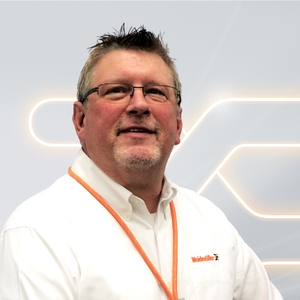 |
Senior Director of Automation Sales Network Weidmuller |
Industrial Cameras: Beyond the Limits of Smart Cameras
Frank Jakubec, Product Marketing Manager, Balluff Inc.
Topic(s): Machine Vision, Imaging & Inspection
New to industrial cameras or encountered limitations in your previous smart camera implementations? Whether you lack technical experience or are simply looking to refresh your knowledge, our course is tailored just for you. Join us on a journey through the fundamentals of industrial cameras, covering essential terminology, indispensable components, and potential pitfalls to be aware of. We'll delve into the critical aspects of industrial cameras, exploring key terms such as shutter, resolution, interfaces, and standard communication protocols, and why they hold significance. Additionally, we'll provide valuable insights on cost-saving strategies through smart solution choices. By the end of this course, attendees can expect to feel confident in their ability to comprehend and engage in discussions about industrial camera technology with integrators, customers, and suppliers. |
|
 |
Product Marketing Manager Balluff Inc. |
Metrology & 2D Calibration Techniques
Daniel Loucks, Sr. Imaging and Measurement Systems Engineer, Corning Inc.
Topic(s): Machine Vision, Imaging & Inspection
Participants will gain an understanding of techniques for creating systems that yield reliable and repeatable measurement results. Practices for proper calibration of imaging systems ranging from appropriate usage of targets to accurate algorithm deployment will be discussed. How to manage images correctly to create repeatable results will be reviewed. Anyone who is developing metrology systems or having and need for accurate measurements will benefit from this curriculum. |
|
 |
Sr. Imaging and Measurement Systems Engineer Corning Inc. |
Realizing the Value of AI in Industrial Automation
Wendy Tan White, CEO of Intrinsic,
an Alphabet company
The biggest robotics shift in the 21st century will be AI-driven. Machine learning, training with synthetic data, foundation models, automated computer vision, adaptive applications, data management and infrastructure will accelerate innovation in the coming decades. In industrial manufacturing, robots are incredible tools but remain costly and complex to program and reprogram—even for today’s experts. With historical barriers to entry like deep domain expertise and specialized skill sets required for programming, these incredibly valuable systems have rarely made sense—economically or operationally—for the vast majority of businesses. With the ubiquitous rise of AI, the potential for innovation and growth across entire industries is being reimagined. |
|
 |
CEO of Intrinsic, |
Building an AI Operating Model
Ashutosh Prasad, Founder & CEO, KoiReader Technologies, Inc.
Topic(s): AI & Smart Automation
The arrival of Artificial Intelligence led automation in Enterprise has occurred so fast that most business and IT leaders are caught unawares. When tasked to build an AI strategy for the organization, many leaders today are struggling to answer even basic questions such as what is a GPU, who is NVIDIA, or that Generative AI should be the final step in an AI journey rather than the starting point. Adding to this fog are the continuous marketing messages from a multitude of vendors who often have the eyes and ears of the customers but themselves are not an AI-first firm. |
|
 |
Founder & CEO KoiReader Technologies, Inc. |
Delivering Superior OEE with Edge and Machine Connectivity
Luis Narvaez, Product Manager/Automation Specialist, Siemens
Suresh Rama, Portfolio Development Executive, Siemens
Topic(s): AI & Smart Automation Automation Systems, Design & Integration
Imagine you've recently installed and commissioned a new machine at a customer site. Your team noted that the on-site conditions appeared much harsher than what was specified in the requirements for the machine. And indeed, after a very short time, the first systems start to fail. You point to the fact that your machine was designed as specified, and not for use in such a demanding environment, but your customer is very dissatisfied nevertheless, as they now have to deal with the significant costs of downtime and resolving the problem. Could you have addressed that risk prior to the incident has happened? In short, machine builders can increase their productivity, machine availability, and machine throughput when choosing solutions for…
|
|
 |
Product Manager/Automation Specialist Siemens |
 |
Portfolio Development Executive Siemens |
Ecosystems - Unlocking Solutions via Partnerships
Robert Brodecki, Application Portfolio Manager, KUKA Robotics Corp
Topic(s): Robotics: Applications, Systems & Innovations The Business Of Automation
“Some people want to know how the watch is made, most just want to know what time it is.”
All these topics must be considered and more, including legal structures, R&D partnerships, and beyond. It’s the same for the smaller software and AI companies, too – who are the big players to partner with to find success? How can you convince them to open their interfaces and equipment so you can fully integrate? |
|
 |
Application Portfolio Manager KUKA Robotics Corp |
The Future of AI Vision Inspection: How to Maximize Inspection Accuracy Using Auto Deep Learning Vision Software
Hongsuk Lee, CEO, Neurocle Inc.
Topic(s): AI & Smart Automation Machine Vision, Imaging & Inspection
Neurocle is excited to present its Auto Deep Learning Vision software in this seminar, offering industrial experts the essential tools to optimize deep learning models for their applications. The seminar will cover:
|
|
 |
CEO Neurocle Inc. |
Bridging the Gap: The Link Between Automation and Machine Tools
Greg Buell, Staff Engineer - General Industry and Automotive Segment, FANUC America Corporation
Robot sales in the US continue to rise year over year with more companies in many different industries adding robots to their operations. Smaller machine shops, however, have been reluctant to automate their machine tools, even though they know it can boost productivity by double digits and help them solve their labor challenges. But fears of automation’s cost and drain on precious time and resources have posed major barriers to entry for these businesses. |
|
 |
Staff Engineer - General Industry and Automotive Segment FANUC America Corporation |
Edge Computing and Manufacturing: Use Cases and Practical Examples of Industrial IoT
Evaldo de Oliveira, VP of Business Development, FairCom
Topic(s): AI & Smart Automation Automation Systems, Design & Integration
Step into the dynamic world of Industry 4.0 with Evaldo de Oliveira from FairCom as he unveils the game-changing potential of Edge Computing in manufacturing. Join us as we delve into the realm of Industrial IoT, exploring real-world use cases and actionable examples that redefine efficiency, productivity, and innovation on the factory floor. From predictive maintenance to optimized production lines, discover how Edge Computing revolutionizes manufacturing processes, propelling businesses into the future. |
|
 |
VP of Business Development FairCom |
Inspect the Impossible, Seeing Beyond the Visual Spectrum
Ryan Marti, Product Manager – Industrial Cameras & Smart Cameras, Omron Automation America
Topic(s): Machine Vision, Imaging & Inspection
How do you solve an unsolvable problem? These types of questions and answers have plagued automation and vision engineers for decades. How do we inspect a cookie that is already inside of a package? Can we utilize machine vision to see if rice has mold to determine if it is safe to eat? How do we remove particulates from the air or the great cosmos? Solving these problems can lead to safer food, better electronics, and maybe even unveiling the universe like never seen before. |
|
 |
Product Manager – Industrial Cameras & Smart Cameras Omron Automation America |
Multi-Robot Coordinated Motion
John Wen, Professor and Head, Electrical, Computer, & Systems Engineering, Rensselaer Polytechnic Institute
Demanding industrial applications from cold spraying to additive manufacturing are increasingly deploying multiple robots in a coordinated fashion. For cold spray coating, leading industry deployment involves a dual-robot system, where one robot holds the part and the second robot holds the spray gun to impinge metal powders onto the part. For wire-arc additive manufacturing (WAAM), the welding robot, the positioner, and the metrology inspection robots all need to be coordinated to ensure high-quality end products. This talk will discuss issues and the latest advances that arise in such coordinated operation of multiple industrial robots, including:
Use case results for cold spraying and WAAM using ABB, FANUC, and Motoman robots will be presented. |
|
 |
Professor and Head, Electrical, Computer, & Systems Engineering Rensselaer Polytechnic Institute |
Advanced Image Processing
David Zerkler, Senior Manager - Machine Vision Learning, Zebra
Topic(s): Machine Vision, Imaging & Inspection
The ability to correctly analyze and classify details and particles in an image can be critical to the success of an imaging application. Strategies around thresholding, advanced morphology and the correct usage of particle filters will be covered. Additional topics include training strategies, images transforms, and image filtering. |
|
 |
Senior Manager - Machine Vision Learning Zebra |
Advanced Vision System Integration
David Dechow, Industrial Factory Solutions Architect, Motion AI
Robert Tait, Partner, Optical Metrology Solutions
Topic(s): Machine Vision, Imaging & Inspection
Producing a reliable vision system is no accident. It begins with creating a strong specification that carries through from component selection to system development and finally on-line deployment. Successful and efficient vision systems integration in an automation environment can be achieved by following a general well-accepted workflow that will guide the execution of each phase of the process. It’s important also to be able to identify certain classic integration challenges that may happen along the way. This course will take you through the steps needed to achieve vision system integration success and will detail practical examples of typical use cases and the annoying but sometimes-amusing pitfalls that can (and will) occur. |
|
 |
Industrial Factory Solutions Architect Motion AI |
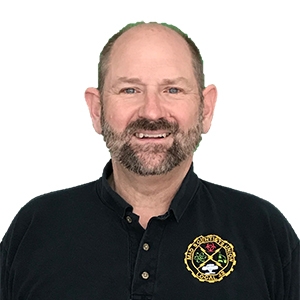 |
Partner Optical Metrology Solutions |
Additional fee required for exam |
